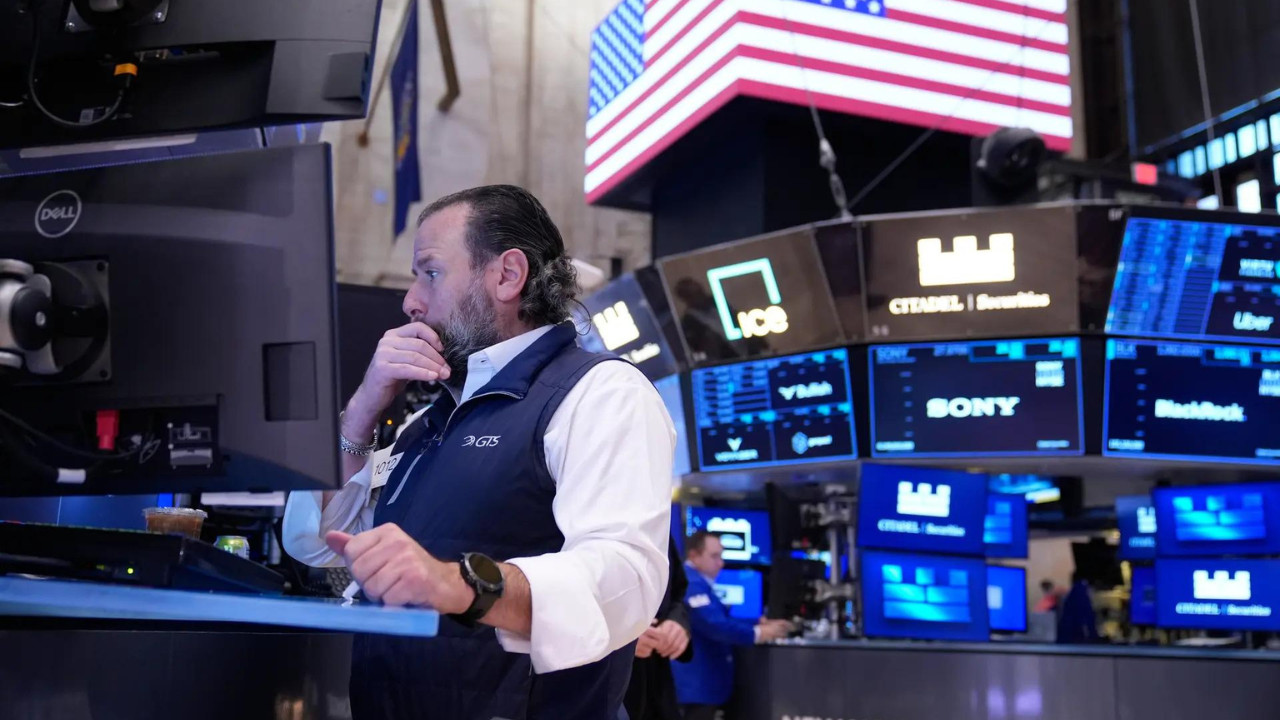Wall Street saw modest gains on Friday, concluding November’s trading on a shortened schedule. The S&P 500, Dow, and Nasdaq all edged higher. Coinbase surged as Bitcoin surpassed $92,000. Major tech stocks like Alphabet and Micron advanced, while Oracle saw a dip. European markets also posted mild gains, with traders anticipating eurozone inflation data.
Riding the Rollercoaster: Wall Street Navigates November’s Final Curve
November’s curtain call on Wall Street was a mixed bag, wasn’t it? Like a seasoned performer taking a final bow, the market offered a glimpse of resilience, even with a brief, heart-stopping interruption. The major indices managed to eke out gains on the last trading day, but the month itself tells a more nuanced story. We saw economic data dance with geopolitical uncertainties, all culminating in a final week that kept investors on their toes.
Let’s rewind slightly. The Dow Jones Industrial Average, that barometer of American industry, nudged its way higher. The S&P 500, a broader reflection of the market’s health, also closed in positive territory. And even the tech-heavy Nasdaq Composite managed to join the party, though with a little less enthusiasm. But, behind these modest gains lies a complex interplay of factors.
One significant event that threw a temporary wrench into the works was the outage at CME Group. Imagine the world’s biggest futures exchange suddenly going dark. Chaos, right? For a fleeting moment, the trading of crucial financial instruments – futures contracts tied to everything from interest rates to commodities – ground to a halt. This disruption, while thankfully brief, underscores the vulnerability of our increasingly digital financial infrastructure. Think of it as a momentary power outage in a bustling city – things quickly get back to normal, but it serves as a reminder of the fragility beneath the surface.
<img src="image-url-here.jpg" alt="Wall Street traders reacting to market fluctuations, highlighting the focus keyword: Wall Street Trading.” width=”600″ height=”400″>
But the market is nothing if not resilient. The system sputtered back to life, and trading resumed. This event did, however, contribute to the overall sense of caution that seemed to be hanging in the air as November drew to a close. What impact, if any, will this outage have on future market confidence? That’s the million-dollar question.
Beyond the technical glitches, the market continues to wrestle with broader economic realities. Inflation, while showing signs of cooling, remains stubbornly persistent. Interest rates, the Federal Reserve’s primary weapon against rising prices, are still elevated. The ongoing conflict overseas adds another layer of uncertainty, casting a long shadow over global markets. It is a complex web of interconnecting economic factors that makes predicting where the market will move difficult.
We saw strong performance in some surprising corners this past month. Certain sectors, like energy and materials, actually outperformed the broader market. Does this signal a shift in investor sentiment towards value stocks and away from high-growth tech companies? It is something to keep an eye on, especially as we look ahead to the new year.
The final weeks of the year are often characterized by lower trading volumes and increased volatility. Tax-loss harvesting, portfolio rebalancing, and the general holiday slowdown can all contribute to unpredictable market swings. Investors might be tempted to take profits off the table after a year of solid gains, leading to temporary pullbacks. On the other hand, some might see this as an opportunity to scoop up bargains before the January effect kicks in, potentially driving prices higher.
Navigating these waters requires a steady hand and a clear understanding of your own investment goals and risk tolerance. Reacting emotionally to short-term market fluctuations is often a recipe for disaster. Instead, focus on building a diversified portfolio and sticking to a long-term investment strategy. Consider, also, re-evaluating your portfolio for end-of-year opportunities. You might also consider reviewing other insights and strategies for responsible investing on our site.
Wall Street Trading: A constant balancing act between opportunity and risk, especially as we head into December.
As we move into December, the final month of the year, expect further volatility and, possibly, some surprises. The market’s performance will depend on a multitude of factors, including economic data releases, geopolitical developments, and the actions of the Federal Reserve. Ultimately, investors should remain vigilant, disciplined, and focused on their long-term objectives, prepared to weather any potential storms that may lie ahead. The story of the year is nearly written, but the epilogue is still to come.






